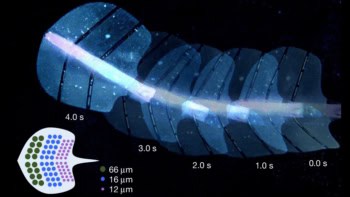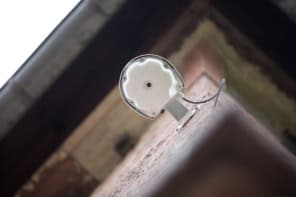A US team has made an optical fibre that can support laser pulses with a peak power of several megawatts - several hundred times the power handling ability of conventional fibre. The hollow-core photonic band-gap fibre developed by Alexander Gaeta and colleagues at Cornell University and the optics company Corning could prove useful for applications in spectroscopy, biology and medicine where high-power pulses need to be delivered through a fibre (D G Ouzounov et al. 2003 Science 301 1702).
The photonic fibre is made up of a honeycomb silica structure that surrounds a central hollow core. In lab experiments, the US team have shown that a 170 cm long, Xenon-filled fibre can transmit a 75 fs pulse with a peak power of about 5.5 MW. An air-filled version could handle peak powers of up to 2 MW.
The key to the fibre’s astonishing power handling is a dramatically reduced optical nonlinearity of just 3.02×10-19 cm2/W – three orders of magnitude smaller than normal fibre made of solid silica glass. In standard fibres, optical nonlinearities such as Raman scattering limit transmission to pulses with just a few nanojoules of energy. In contrast, the honeycombed structure of the Cornell-Corning fibre can support microjoule pulses.
“Because the dispersion of photonic bad-gap fibres is comparable to that of conventional single-mode fibres and the nonlinearity is 1000 times smaller, we expect that they can support solitons with peak powers that are about 1000 times those that can be supported by conventional single-mode fibre,” say Gaeta and co-workers. And by injecting a gas such as xenon, which does not have a Raman component, into the fibre core, it should be possible to maintain these high powers and intensities over distances exceeding 200 m.



